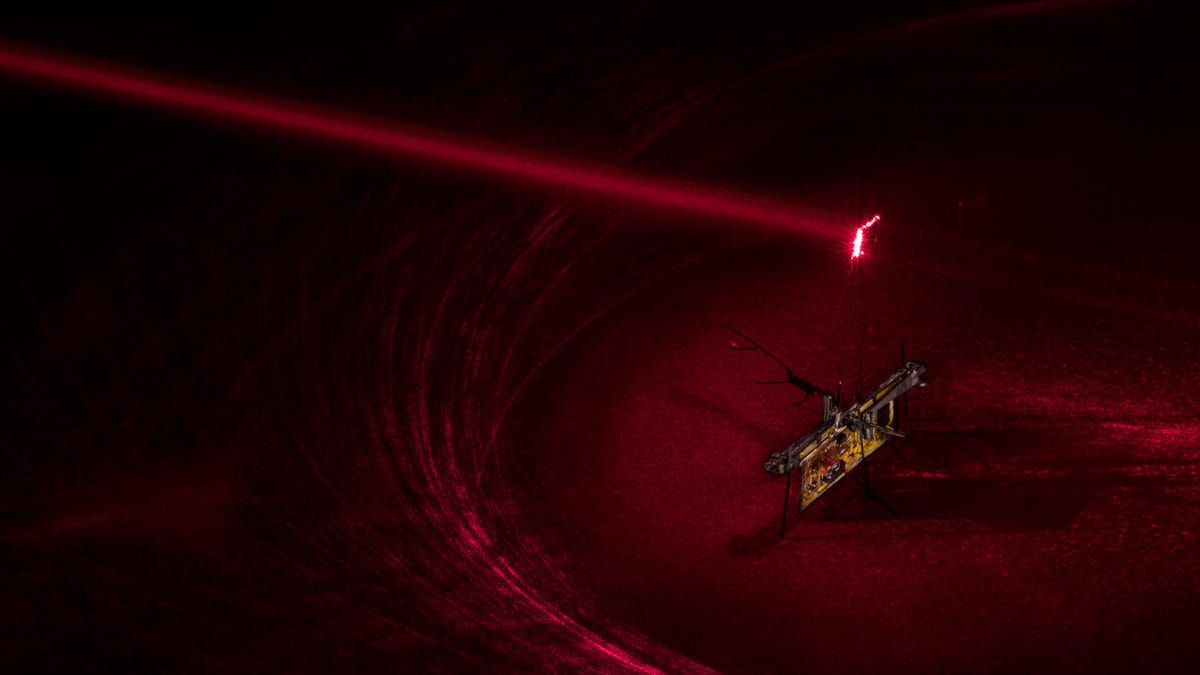Black Mirror-like robotic insects, wireless and powered by lasers
Last episode of season 3: Robot bees kill loads of people. Don't say they didn't warn us.

Last month's Black Mirror parallel came in the form of China's credit score system. This month, flying robotic insects.
Engineers at the University of Washington have made what they say is the first wireless flying robotic insect. The team will present its findings on RoboFly May 23 at the International Conference on Robotics and Automation in Brisbane, Australia.
Before RoboFly, the team created RoboBee, which could fly but was connected to the ground by a wire. The electronics that powered and controlled it were too heavy for its miniature wings to carry without this leash.
RoboFly is slightly heavier than a toothpick. It works with a photovoltaic cell, the kind used on roofs for solar energy, that the engineers charge with an invisible laser beam. A tiny circuit onboard the fly converts the laser energy into electricity, boosts it, and makes the wings flap.
"It was the most efficient way to quickly transmit a lot of power to RoboFly without adding much weight," said co-author Shyam Gollakota, an associate professor in the UW's Paul G. Allen School of Computer Science & Engineering.
For now RoboFly can only take off and land. Next for the team: steering.

